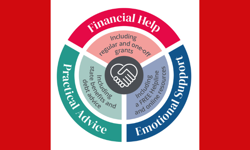“It’s all an exhausting challenge. Yet it’s also a great opportunity.” That quote from a major B2B publisher captures the mood of a new overview of the digital models emerging in the UK publishing business.
The survey looked across a number of different areas, including…
* Websites
* Digital magazines
* Mobile apps
* Social media
* Ecommerce
* Live events
* Customer communications
How B2B and Consumer differ
In some digital disciplines, B2B publishers are leading the way; in others consumer publishers are the pioneers. Here are some of the differences between the two…
* Charging for online content.
Some 39% of B2B publishers are already charging for online content with a further 33% planning to in the future. Of those who are charging, most fall in the £100-1,000 per annum range, but with a few pushing over £1,000pa. By contrast, a much smaller proportion of consumer publishers (19%) are charging now, with an additional 34% planning to do so. Here, rates are much lower with the key band being the £20-50 per annum range. In terms of payment mechanisms, the consumer publishers are evenly split between one-off charges and annual subscriptions, while B2B have gone very heavily down the annual subscription route.
* Consumer pioneering mobile apps
Consumer publishers have been quick to adopt mobile app editions of their titles: 79% have mobile apps, either now or about to launch, compared to 55% of B2B publishers. As with online charges, B2B are more robust in getting users to pay for apps – consumer publishers are discounting their apps at an average 20% below print publication prices while B2B are discounting by a more modest 12%.
* Live events growing
57% of consumer publishers are already running live events, with another 13% planning to do so. The spread of live events is broader for B2B: 58% of B2B publishers are running conferences, 41% exhibitions, 39% face-to-face networking, 20% face-to-face training, and 14% paid-for reader events. B2B publishers are far more interested in online and virtual events - 27% already run webinars, with distance learning, online networking and virtual events also on the list.
* Ecommerce is growing, but with different strategies
Both sectors of publishing are already involved in selling event tickets online. Consumer publishers are more likely to sell physical goods online (43% hold stock, while 25% have commission arrangements with retailers). B2B publishers are more likely to be selling digital goods such as reports and to be engaged in elearning.
So, B2B publishers still lead in online subscriptions, and have a greater interest in online and virtual events. They are more successful in holding premium prices for digital content. Consumer publishers have pioneered mobile app editions of their titles, but B2B publishers are likely to catch up soon. Social media is just starting to generate real results for both. Ecommerce is a growing source of revenues.
Zooming in on social media
Social media is an area which has come on to most publishers’ radar recently, but of all the digital areas, it is perhaps the most perplexing in terms of how to commercialise it. B2B are much further advanced than consumer in integrating this into their marketing activity.
Facebook and Twitter remain the bedrock of consumer publisher activity, while LinkedIn and Twitter are the core for B2B. YouTube is important for both and with an adventurous 24% of consumer already experimenting with Pinterest.
The applications of social media fall into five broad areas:
1. Driving traffic to the brand website
12% of total website traffic is driven by social media (15% for consumer publishers and 10% for B2B publishers).
2. Marketing live events
Of those who track this, it is estimated that social media drives 12% of attendees to live events (the same for both consumer and B2B publishers).
3. Generating advertising and sponsorship revenue
Under half of publishers are seeing any revenue at all from social media, but consumer are more advanced than B2B. Social media tend to be bundled into broader, multi-channel campaigns rather than being charged for separately.
4. Selling subscriptions
Trying to sell subscriptions is another area where consumer is more advanced than B2B, but this is still seen to be a marginal activity.
5. Customer insight
Understanding the end-customer better through monitoring the interaction within social media areas is mentioned by a number of publishers, but this does not seem to be being undertaken by many in a structured way currently.
The opportunities and challenges behind the figures
All the respondents were asked to list the key issues, both the positive opportunities and the negative challenges, for their own businesses in the immediate future. There are a number of recurring themes:
Charging for content
* “Digital delivery of paid-for online content on whatever platform our markets require.”
* “Online paywalls, new forms of digital promotion, using technology to lower cost, but also deliver more at the same time.”
* “Providing real work-flow solutions to end-users.”
* “Launch intelligent online B2B products in specific markets, bringing knowledge, tools and resources to professionals seeking answers.”
* “Online site licence subscriptions.”
* “Move from news towards high level intelligence, analysis, guides, tools and insight.”
Grasping the mobile opportunity
* “Growth in smartphones and apps and the developing trend for on-the-go, just-in-time, in-a-blink, bite-sized specialist interest information. It’s all an exhausting challenge. But also a great opportunity. Or a series of opportunities.”
* “Digital media will allow interaction, instant links to sources, including advertiser products, blogs and forums. It will bring the magazine alive and make it a gateway to other media.”
* “Digital magazines on Apple Newsstand, increased engagement with customers, huge opportunities to analyse customer interactions and to tailor subs renewals as a result.”
Making multi-platform publishing work
* “Combining our website, blog with social media, print and digital editions.”
* “Cross-media publications, social media integration into apps, investing in great CMS to improve our own internal workflows.”
* “Anticipating platforms that will be used by consumers in the future and working out how best to deliver possible content using new channels.”
* “More sophisticated apps requiring us to change our editorial processes.”
Exploiting databases and developing ecommerce
* “Cross-selling and collaborative content creation between conference and event and publication staff.”
* “Data, single-user view for cross-selling.”
* “Up-sell and cross-sell new products to engaged web fans determined by detailed analytics.”
* “Exploiting our substantial customer databases better.”
* “Database growth and improved targeting and segmentation.”
* “Increase ecommerce to monetise our database better.”
Going global with digital
* “To reach an international audience more effectively with digital products.”
* “Expand our current content creation into new areas to enhance our ability to reach new audiences globally.”
* “A bigger chance to reach an international audience.”
* “Growth in live and virtual events - in China and India in particular.”
* “To harness the digital world and its ability to take us to global markets instantly.”
Growing live and online events
* “To build our own events and collaborate more with other third party events.”
* “Launching a unique conference that will be transformational for the industry.”
The double challenge of skills and resource
* “Knowing what skills and capabilities to hold on to during the transition from the old legacy business.”
* “Investment needed to keep up with new channels.”
* “Being able to keep up with changing technology.”
* “Not having the staff resource to move quickly enough. Not having the financial investment to move decisively enough.”
* “Getting the right people with the right skills.”
* “Not having the editorial resources to deliver quality content across multiple channels.”
Looking out for new competition
* “The proliferation of news and information sources.”
* “New entrants from non-media outlets such as associations and brand owners.”
* “Low barriers to entry in digital media creation. Too much noise in hyperactive digital marketing channels.”
What does it all mean?
One of the most notable aspects of the open-ended feedback provided by publishers in the survey is how the distinction between an “opportunity” and a “challenge” often now seems completely blurred. The positive commercial openings are presenting themselves so thick and fast that delivering them quickly enough and to a satisfactory quality has become a real problem.
“Digital first” has become the mantra of many publishers, especially in B2B, but “digital only” is a long way off (if ever) for most. We are not in the middle of a transition from print into digital, but of an explosion into multi-channel, with many publishers actually reversing back into print for some elements of their service.
All this means that the new business models are usually more complicated than the ones they are replacing, but also they are constantly flexing and evolving. The Specialist Media Insights project provides a detailed snapshot of what these models are starting to look like.
For a free PDF of the presentation given by Carolyn Morgan at The Specialist Media Show, contact Carolyn.










